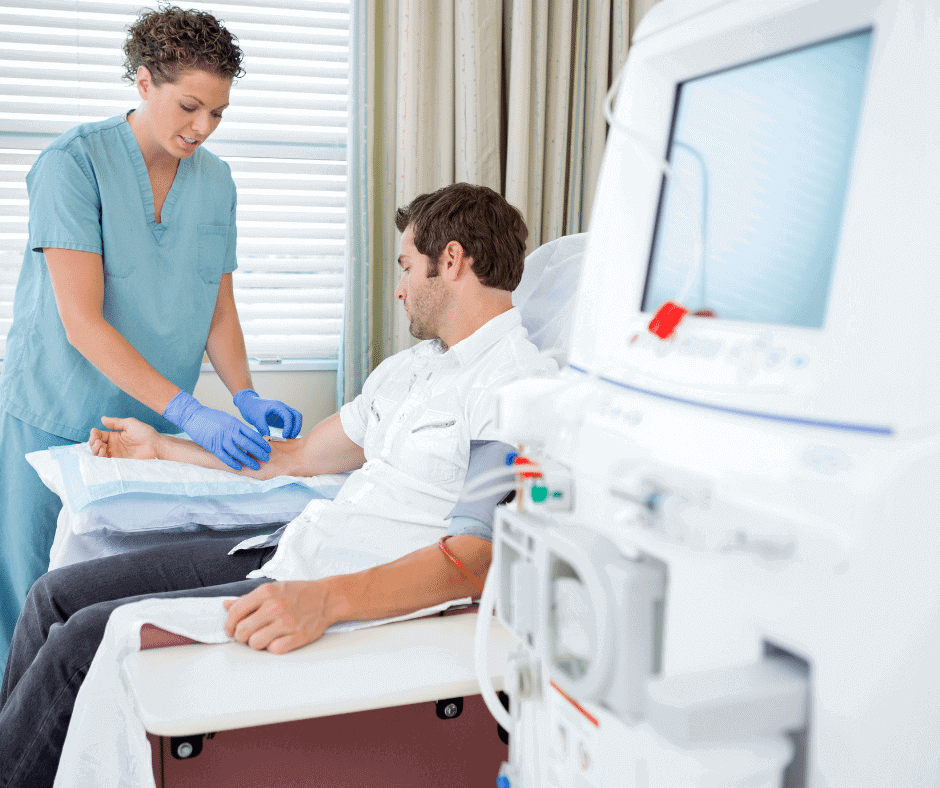As mentioned in our Classification and Grouping Guide, there are a series of rules to consider when classifying and grouping medical devices. The above-mentioned rules are fully explained in Appendix II – Supplement of medical devices of the Mexican Pharmacopeia (FEUM).
In this article we will focus on explaining strategies to classify and group a Dialysis machine and the common accessories related to it, following simple general rules. We also detail some particularities that can be found according to our everyday experience.
General characteristics of a Dialysis machine
Dialysis machines are used as part of a Hemodialysis procedure to clean the patient blood when kidneys are not properly working. These machines work with several accessories, the most common are:
– Dialyzer. Also known as an artificial kidney. This is a filter with a membrane that separates the waste product in the blood.
– Fistula needle sets. The Fistula or arteriovenous (AV) fistula is a connection between an artery and a vein to promote a stronger vessel to get access to periodic Hemodialysis treatments. Fistula needles are used to get access to the fistula.
– Tubing set. These are all the connections generally divided in arterial and venous lines to carry the blood from the artery to the machine and way back to the vein.
– Bicarbonate. In certain procedures, bicarbonate is used to control metabolic acidosis and is an alternative presented in bags or cartridges.
Classification according to the level of risk
Dialysis machines are classified as medical equipment and due to their level of risk are considered Class II based on rule 3. It is worth mentioning that we have found precedent Dialysis machines as Class III medical devices. Nevertheless, in the latest supplement of the pharmacopeia (referred at the beginning of this article), it is clearly stated in rule 3 that those devices intended to filter blood will be considered class II. Such note was not clear before the latest amendment to the supplement and generally creates controversy on this classification.
On the other hand, all the tubing and needle sets will be considered as class II medical devices based on rule 3 and 6. Regarding dialyzers and bicarbonate, both are also considered class II medical devices based on rule 3. As with the Dialysis machines, dialyzers also have precedence as class III medical device but since the same classification rulesis applicable, class II is a better approach.
As a final note about the classification, some companies still prefer to register any of these devices as class III to keep a safer regulatory pathway. Such strategy is still valid and do not have a considerable impact in timelines or paperwork documentation, but basically on the Ministry of Health fees. You can check more about this in our guidelines.
Grouping for Sanitary Registration purposes
The classification for a Dialysis machine and its accessories is basically the same (Class II). Yet, it is still necessary to consider a few points regarding the grouping criteria. Specifically for the dialyzers, which are presented in High and Low, flux models.
Regarding the Dialysis machines, if different models are presented, it is necessary to confirm that they share the same technology, intended use and manufacturer in order to group them in the same registration.
On the other hand, the tubing sets and needle sets can be intended for different machines or have different technologies for the needle. Considering a low risk grouping strategy, different needle types should be grouped in different sanitary registrations. On the other hand, we do consider that it is still safe to keep the tubing sets in the same registrations even if those are intended for different machines. Nevertheless, this last point still creates controversy and should be better evaluated for every case.
Finally, the dialyzers are generally presented in High / Low flux versions. The difference between both versions basically is due to the type of membrane. To keep a low risk grouping criteria, it is better to separate both versions in different registrations. Even though, the intended use is the same in some way, the technology is different between the membranes.
Thanks for reading this article, if you have any question about this topic, feel free to contact us at contact@veraqueconsulting.com or check our guidelines.

